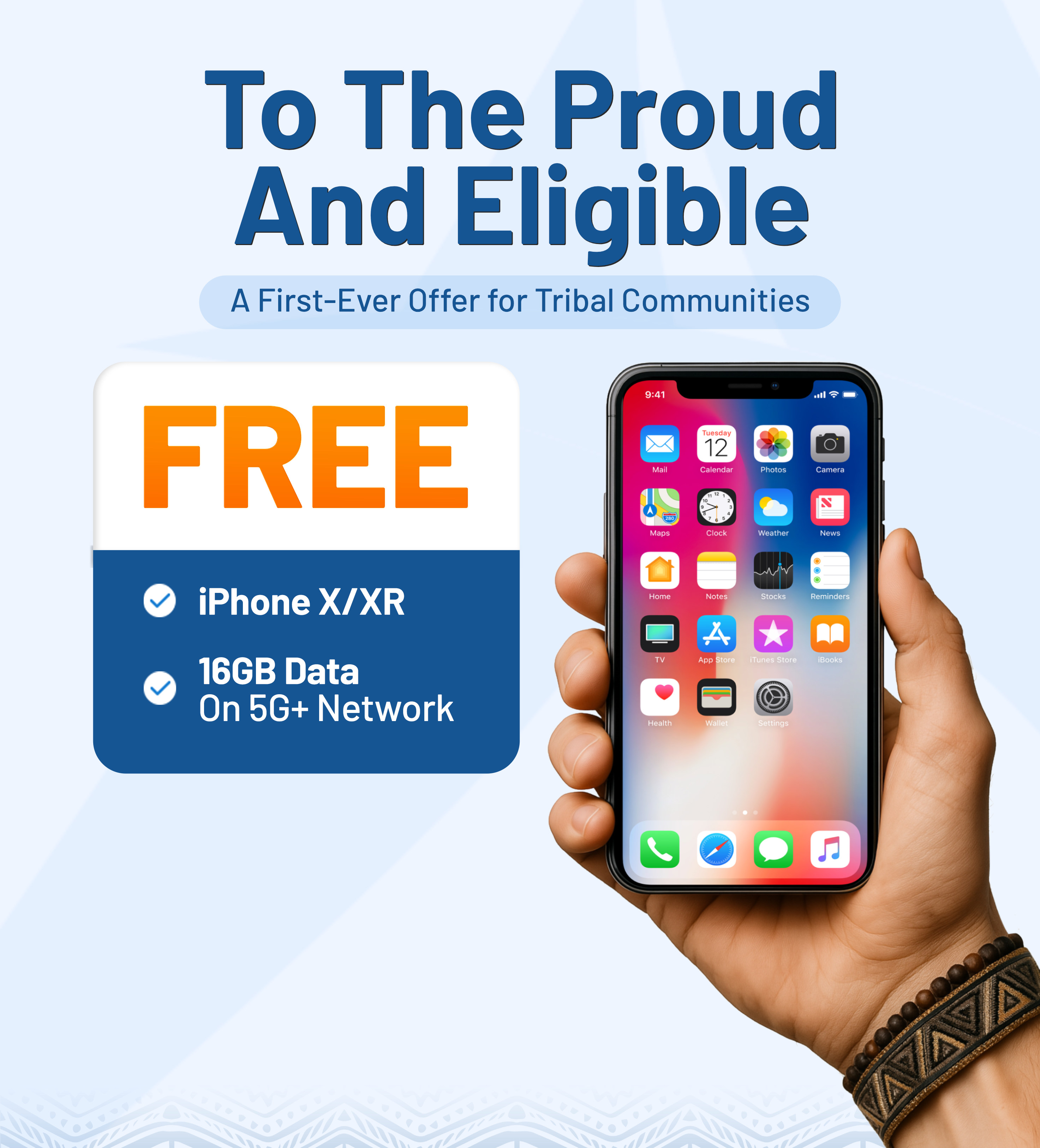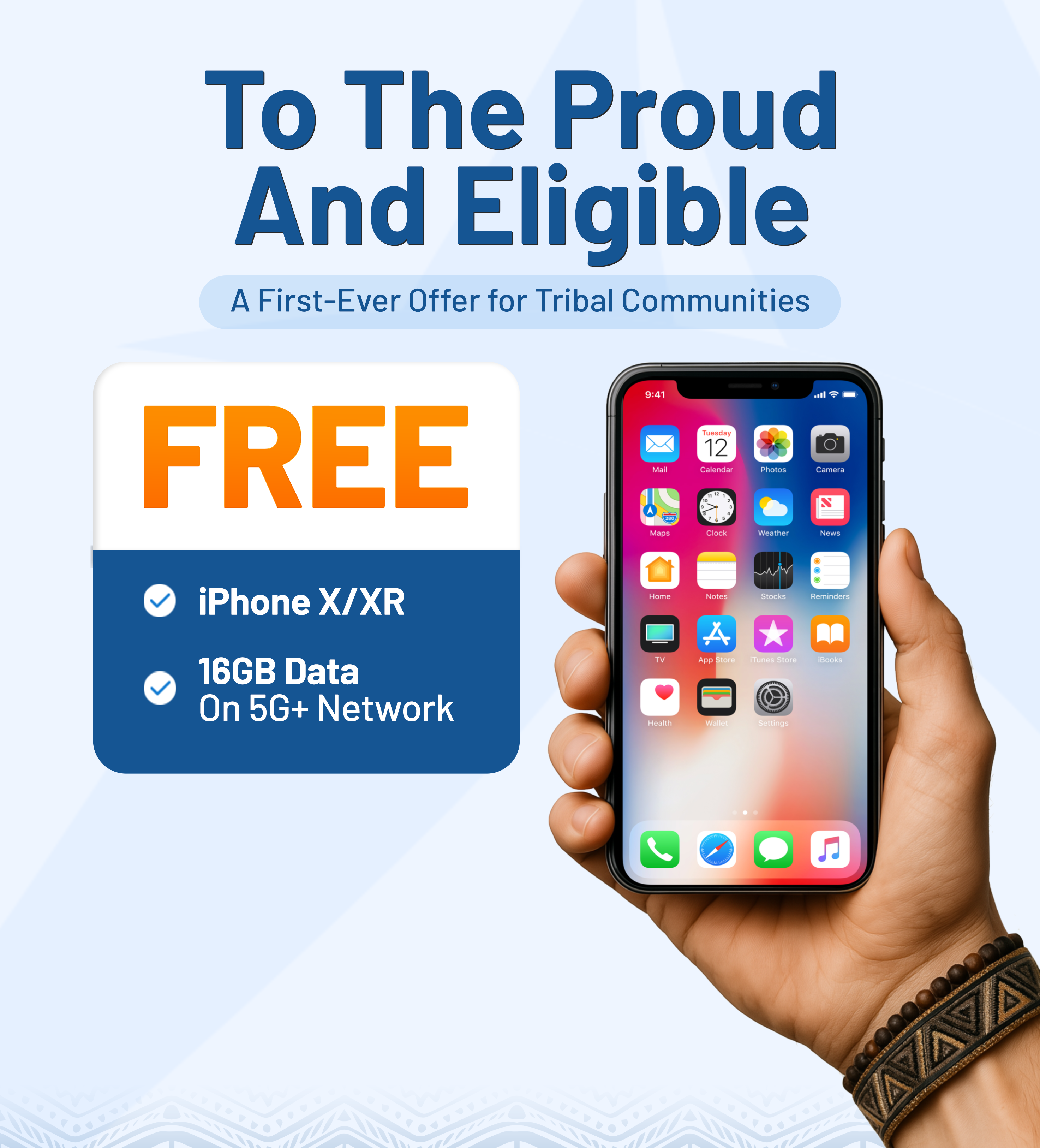Qualifying Tribal Lands are designated areas recognized by the federal government where Native American communities may access exclusive benefits and support programs.
From enhanced Lifeline discounts to specialized healthcare and education funding, these lands play a critical role in bridging economic and service gaps for tribal residents. In this guide, you’ll discover what qualifies as tribal land, who is eligible, and how to access the wide range of federal and tribal assistance available today.
1. What Are Qualifying Tribal Lands?
1.1. Defining Tribal Lands under FCC guidelines
According to the guidelines of the Federal Communications Commission (FCC), “Tribal Lands” refer to clearly defined geographic areas associated with federally recognized Native American communities.
These areas are classified as follows:
- Reservations, pueblos, or colonies of federally recognized Native American tribes.
- Former reservations in the state of Oklahoma, which were once tribal territories before being dissolved.
- The Alaska Native Claims Settlement Act (ANCSA) of 1971 led to the creation of distinct regions for Alaska Native communities.
- Indian allotments: Parcels of land distributed to individual tribal members under historical U.S. land policies.
- Hawaiian Home Lands: Land held in trust by the government under the Hawaiian Homes Commission Act of 1920.
These definitions play a critical role in determining eligibility for federal assistance programs, especially the Lifeline program, which helps low-income residents living on Tribal Lands access affordable telecommunications services.
1.2. Are you a Tribal Lands resident qualified for Lifeline?
To be considered a qualified Tribal resident under Lifeline, you must:
- Meet the standard Lifeline eligibility criteria (based on income or participation in qualifying programs), and
- Reside on federally recognized Tribal lands as defined by the FCC
If you’re unsure whether your residence falls within Tribal Lands or if you meet the eligibility requirements, it is recommended that you:
- Contact a participating Lifeline service provider for personalized guidance.
- Refer to official sources such as the Universal Service Administrative Company (USAC) or the Federal Communications Commission (FCC) websites.
These resources offer Tribal Lands map, address-checking tools, and detailed information to help you determine your residency status with confidence.
2. Tribal Lands in the United States
2.1. What States have Tribal Land?
The following U.S. states have significant areas of tribal land:
- Alaska: Home to 229 federally recognized tribes, Alaska has the highest number of tribal entities. Its tribal lands are organized under the Alaska Native Claims Settlement Act (ANCSA).
- California: Proudly hosts over 100 federally recognized tribes, with numerous reservations and rancherías spread throughout the state.
- Arizona: Includes several large reservations, such as parts of the Navajo Nation and the Tohono O’odham Nation.
- New Mexico: Has 23 federally recognized tribes, including the Pueblo, Navajo, and Apache nations.
- Oklahoma: Historically known as Indian Territory, Oklahoma is home to 39 federally recognized tribes.
- Nine federally recognized tribes reside in South Dakota, with each operating its own designated reservation area.
- North Dakota: Includes several reservations, such as the Standing Rock and Turtle Mountain reservations.
- Montana hosts seven tribal reservations, notably those of the Crow and Blackfeet Nations.
- Washington: Home to 29 federally recognized tribes with various reservations.
- Minnesota: Has 11 federally recognized tribes, including the Ojibwe and Dakota nations.
Other states with notable tribal lands include Florida, Michigan, Wisconsin, Oregon, and Idaho. Each state’s tribal lands vary in size, population, and governance structure, reflecting the diverse histories and cultures of Native American communities across the country.
2.2. How much of South Dakota is Tribal Land?
South Dakota Tribal Land is home to nine federally recognized tribes, each with its own reservation. Altogether, these reservations make up approximately 12% of the state’s total land area.
The main reservations include:
- Pine Ridge reservation: One of the largest reservations in the United States, covering over 2 million acres.
- Rosebud reservation: Encompasses approximately 882,416 acres.
- Cheyenne River reservation: Covers around 1.4 million acres.
- Standing Rock reservation: Located along the border of North and South Dakota, with a significant portion of land in South Dakota.
- Crow Creek, Lower Brule, Flandreau Santee Sioux, Sisseton Wahpeton, and Yankton reservations: Each varies in size and population.
These South Dakota tribal lands are not only large in size but also deeply significant in cultural and historical value. They serve as centers for tribal governance, cultural preservation, and community life, reflecting the rich heritage of the Lakota, Dakota, and Nakota peoples who have lived in this region for generations.
3. Tribal Benefits for Residents of Qualifying Tribal Lands
3.1. What benefits are available for Tribal residents?
Residents of qualifying Tribal Lands are eligible for a wide range of federal and tribal programs designed to enhance their quality of life. These benefits include:
- Financial Assistance and Social Services (FASS): Administered by the Bureau of Indian Affairs (BIA), FASS provides general assistance, child assistance, burial assistance, emergency assistance, and adult care support for eligible individuals and families.
- Enhanced Lifeline program: Low-income consumers who reside on Lifeline qualifying Tribal Lands may qualify for a monthly discount of up to $34.25 on telephone, internet, or bundled services.
- Indian Health Service (IHS): Offers comprehensive healthcare services, including medical, dental, behavioral health, and pharmacy services to American Indians and Alaska Natives.
- Housing assistance: Programs are available to help Native American individuals and families build, purchase, or renovate homes on Tribal Lands.
- Educational support: Organizations such as the American Indian College Fund provide scholarships and support services to Native American students pursuing higher education.
- Economic development programs: Initiatives such as the Tribal Broadband Connectivity Program aim to close the digital divide by funding broadband deployment and digital inclusion efforts in tribal communities.
3.2. How to receive money for being Native American?
To access these benefits, individuals typically need to:
- Verify Tribal membership: Most programs require proof of membership in a federally recognized tribe. Each tribe maintains its own enrollment criteria and records.
- Prove residency on Tribal Lands: Some benefits are specifically reserved for residents of qualifying Tribal Lands. Documents such as utility bills or rental agreements may be required to establish residency.
- Meet income and eligibility requirements: Programs often have income thresholds or other eligibility criteria. Visit the official website of each program to check specific requirements.
- Apply through the appropriate channels: Applications are usually submitted via the program’s official website, local tribal offices, or designated agencies.
By meeting these requirements, eligible individuals can access a wide range of financial support services and programs designed to promote the well-being and advancement of tribal communities.

4. How to Apply for Tribal Lifeline benefits
Applying for Lifeline through AirTalk Wireless is quick and easy—especially if you qualify through a Tribal assistance program.
Just visit the AirTalk Wireless website, select your state, and click “Apply Now.”
You’ll be guided through a simple form to enter your personal information, upload your eligibility documents, and choose a free phone plan.
If you qualify through a Tribal program (such as Tribal TANF, Bureau of Indian Affairs General Assistance, or Food Distribution Program on Indian Reservations), be sure to select that during the application. You’ll also need to upload an official document showing proof of participation.
Tribal applicants receive enhanced benefits with AirTalk, including:
- A free smartphone
- Unlimited talk and text
- Up to 30GB of free, high-speed data
- Free shipping and fast approval
- Access to premium phones at discounted upgrade prices

>> Read more: Tribal Lifeline Program: How To Get Free Government Phone & Tablet
Final Words
Understanding qualifying Tribal Lands is the first step toward accessing a wide range of essential government benefits. Whether you’re verifying your own eligibility or helping others connect with these resources, staying informed with the latest and most accurate information is key.
We hope the information provided above has helped you grasp the full potential and benefits available to residents of Tribal Lands. Check your eligibility and start applying for the support programs you deserve today.


